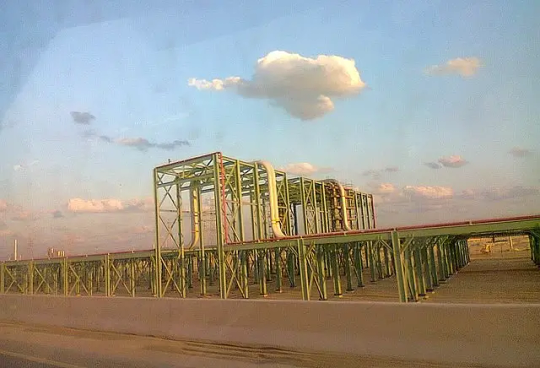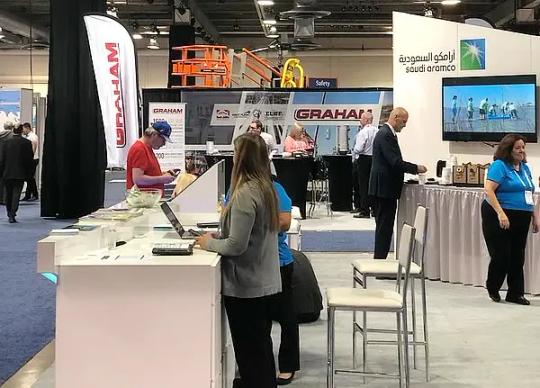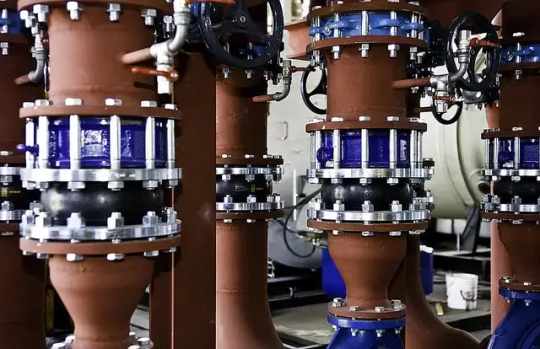#DirectAirCapture(DAC)
Explore tagged Tumblr posts
Text
Aramco: Leading the Way to Sustainability

Paving the Path to Carbon Neutrality
Saudi Arabia's 2060 Net-Zero Ambition Riyadh, Saudi Arabia – In a bold move towards addressing climate change and curbing greenhouse gas emissions, Aramco, one of the world's foremost integrated energy and chemicals companies, announced a suite of groundbreaking projects aimed at reducing its carbon footprint. These initiatives, unveiled on the sidelines of MENA Climate Week 2023, represent a significant step towards Aramco's ambition of achieving net-zero Scope 1 and Scope 2 greenhouse gas emissions across its wholly-owned and operated assets by 2050, while also aligning with the Kingdom of Saudi Arabia's 2060 net-zero goal.

Amaco in Calgary, 2019. Photo by Jason Woodhead. Flickr.
Innovative Approaches for a Sustainable Future
Ahmad Al Khowaiter, Aramco's Executive Vice President of Technology and innovation, expressed the company's commitment to innovative solutions to combat climate change. "These projects highlight just some of the innovative ways that Aramco aims to help mitigate greenhouse gas emissions and address climate change," he said. "This includes new and groundbreaking approaches that align with our vision of a circular carbon economy." Lower-Carbon Hydrogen Following the success of a pilot project in Denmark, Aramco is set to collaborate with Topsoe, an industry leader in energy-efficient technologies, to construct a lower-carbon hydrogen demonstration plant at the Shaybah Natural Gas Liquids (NGL) recovery plant in Saudi Arabia. Expected to produce six tons of hydrogen per day, the plant will employ renewable electricity for electrified steam reforming of hydrocarbons, yielding lower-carbon hydrogen for power generation, with captured CO2 subsequently sequestered.

New energy savings boiler plant. Photo by USACE Europe District. Flickr. Direct Air Capture Aramco is also partnering with Siemens Energy to develop a Direct Air Capture (DAC) test unit in Dhahran, Saudi Arabia. With the capacity to capture up to 12 tons of CO2 per year, the test unit is a precursor to a larger pilot plant expected to capture a staggering 1,250 tons of CO2 annually, scheduled for completion in 2024. Novel CO2 Sequestration In yet another innovative stride, Aramco has successfully piloted a CO2 sequestration method using in situ mineralization. The process involves dissolving CO2 in water and injecting it into volcanic rocks in Jazan, Saudi Arabia, resulting in the permanent conversion of CO2 into carbonate rocks. This pilot project was a collaborative effort between Aramco and the King Abdullah University of Science and Technology, introducing various technologies to enhance efficiency and reduce costs. Geothermal Energy Aramco is also exploring the expansion of its renewable energy portfolio through geothermal energy, leveraging naturally heated underground aquifers to produce electricity. Identified areas on Saudi Arabia's west coast have already been mapped using advanced subsurface technologies, and investigations are underway to assess the extent of geothermal resources at each location.

Vintage photo of Aramco workers. Photo by Tribes of the World. Flickr.
Aramco's Transformation into a Sustainable Energy Leader
Aramco, officially known as the Saudi Arabian Oil Company, has a rich history and ambitious future objectives. Established in 1933, it has played a central role in shaping the global oil industry and boasts vast reserves of crude oil and gas fields, making it the world's largest integrated oil company. Yet, Aramco's vision extends beyond traditional hydrocarbons, aligning with Saudi Arabia's Vision 2060 net-zero goal. Pioneering Clean Technologies Aramco is actively investing in research and development projects focused on clean technologies, such as hydrogen fuel cells and carbon capture, as part of its transition towards a sustainable energy future. The company aims to be at the forefront of innovation, driving progress across various sectors globally. While its status as a dominant oil producer will remain pivotal for the foreseeable future, Aramco's vision surpasses conventional boundaries. The company aspires to be not just an energy provider but a catalyst for innovation, pushing the envelope and championing sustainable practices. In doing so, Aramco exemplifies how even traditional energy giants can pivot towards a more sustainable and environmentally conscious future. Sources: THX News & Aramco. Read the full article
#Aramco#Circularcarboneconomy#Cleantechnologies#CO2sequestration#DirectAirCapture(DAC)#Emissionsreductionsolutions#GeothermalEnergy#Lower-carbonhydrogen#SaudiArabianet-zero#Sustainableenergyleader
0 notes
Text
Humidity-Powered Carbon Capture: Northwestern Engineers Pioneer Low-Cost, Scalable DAC Breakthrough

Ready to see how a simple shift in humidity could transform the fight against climate change? Northwestern engineers have unveiled a moisture‑swing breakthrough for direct air capture (DAC) that combines affordability, scalability, and sustainability—without the hefty machinery or expensive resins that have long held this technology back.
In their April 3, 2025 publication in Environmental Science & Technology, the team details how materials as common as activated carbon, nanostructured graphite and metal oxides can “grab” CO₂ when air is dry and then release it when humidity rises. By harnessing abundant, low‑cost feedstocks—including organic waste streams and industrial byproducts—this approach slashes both capital and operating costs, offering a clear path to gigaton‑scale carbon removal.
Key innovations:
🔹Diverse, low‑cost substrates: Activated carbon, carbon nanotubes, flake graphite and nanostructured graphite were benchmarked alongside iron, aluminum and manganese oxide nanoparticles—each chosen for availability, cost and environmental footprint.
🔹Balancing speed and capacity: Aluminum oxide and activated carbon delivered the fastest CO₂ uptake rates (critical for rapid cycling), while iron oxide and nanostructured graphite achieved higher total capture capacities—vital for maximizing throughput per unit footprint.
🔹Pore‑architecture optimization: By tailoring pore size distributions, the team unlocked a direct lever on capture efficiency—demonstrating that materials with mesopores in the 2–50 nm range hit the sweet spot for both kinetics and capacity.
🔹Energy‑minimal regeneration: Instead of steam or thermal swings, simply raising ambient humidity by 20–30 percentage points was enough to trigger CO₂ release—eliminating the need for intensive heating or vacuum equipment.
🔹Modular, scalable design: The moisture‑swing mechanism lends itself to compact, stackable units that could be deployed in remote locations or integrated into existing infrastructure—opening opportunities in industrial parks, agricultural facilities and urban installations.
Imagine distributed networks of these passive, humidity‑powered modules quietly scrubbing millions of tons of CO₂ each year. The design simplicity means lower maintenance, fewer moving parts and the potential for solar‑powered humidity control—aligning perfectly with net‑zero roadmaps and emerging carbon‑removal marketplaces. Let’s work together to refine these moisture‑swing sorbents, validate performance in real‑world environments and expedite the journey from lab scale to global impact.
Share your thoughts on where this technology could make the biggest difference, and connect to explore how moisture‑swing DAC can fit into your decarbonization strategy!
#DirectAirCapture #CarbonRemoval #MaterialsScience #ClimateTech #Sustainability #Innovation #NetZero #CleanEnergy #GreenTech #EnvironmentalImpact
0 notes
Text
Direct Air Capture: $0.9B to $13B by 2033, CAGR 29.6%
Direct Air Capture Market : Direct Air Capture (DAC) is a revolutionary technology that captures carbon dioxide directly from the atmosphere, offering a promising approach to combating climate change. By extracting CO₂ from the air and either storing it underground or utilizing it in various industries, DAC helps reduce the overall concentration of greenhouse gases in the atmosphere. Unlike traditional carbon reduction methods, DAC directly addresses past and present emissions, making it a vital tool for achieving carbon neutrality. As DAC technology advances, it has the potential to work alongside natural carbon sinks, creating a powerful synergy for climate action and environmental restoration.
To Request Sample Report : https://www.globalinsightservices.com/request-sample/?id=GIS32265 &utm_source=SnehaPatil&utm_medium=Article
With growing support from governments and private investors, DAC is rapidly moving from concept to large-scale deployment. Companies and countries are recognizing the potential of DAC not only for carbon reduction but also for economic opportunity, as it enables the production of carbon-neutral fuels and materials. Scaling up DAC will require collaboration, innovation, and supportive policies, but its ability to provide a direct solution to atmospheric CO₂ levels makes it a key player in future climate strategies. As the world strives toward net-zero goals, DAC could help us build a sustainable path toward a cleaner, greener future.
#DirectAirCapture #ClimateTech #CarbonRemoval #NetZero #ClimateAction #CarbonNeutral #GreenInnovation #CleanEnergy #EcoSolutions #FutureOfCarbon #SustainableTech #CO2Capture #GreenEconomy #EnvironmentalImpact #CarbonFreeFuture
0 notes